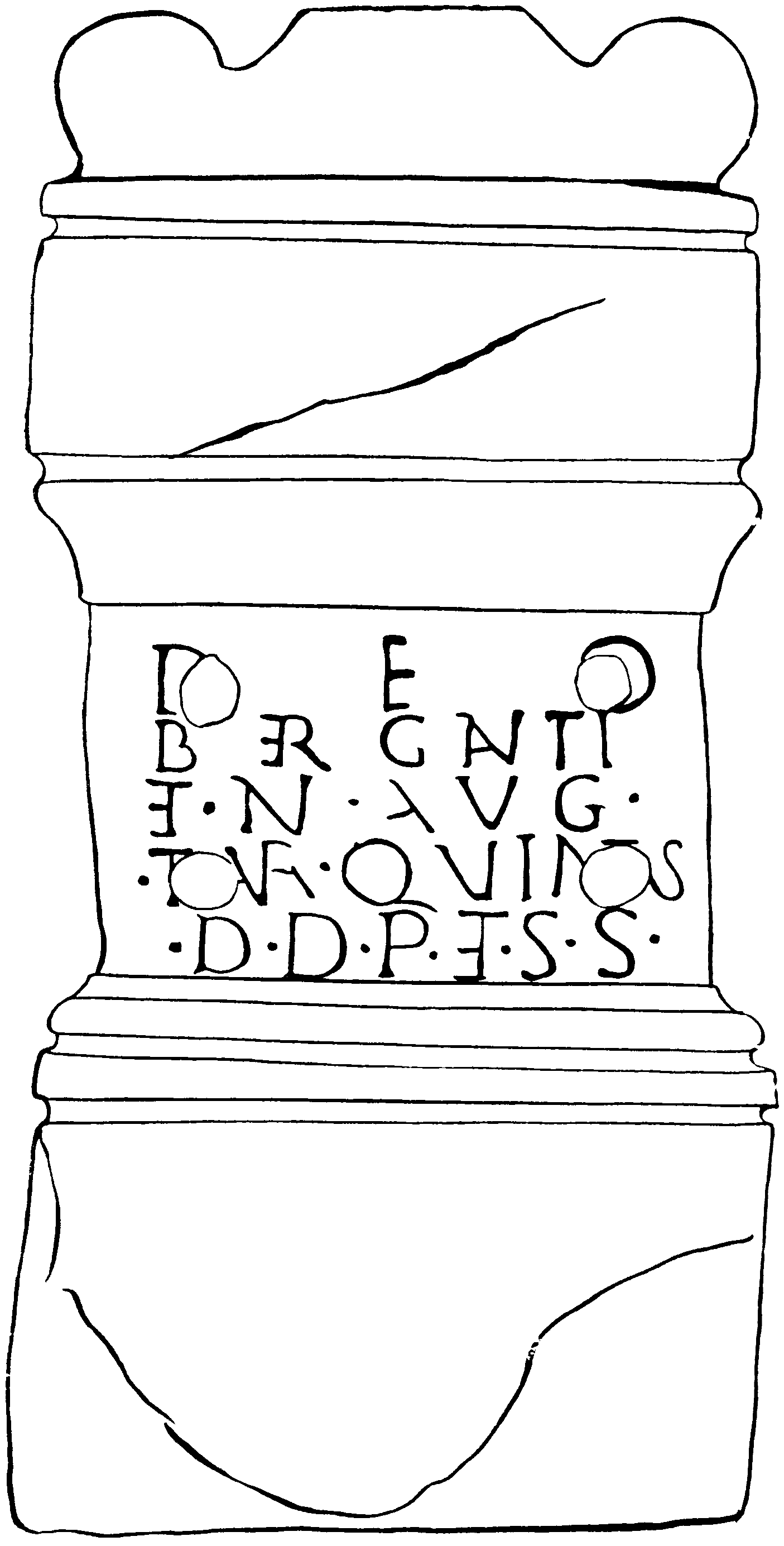A look into a side of Brigantia.

(Image description: A black and white drawing of an altar with an inscription made to Bregans and the divinity of the Emperor.) Credit: R.C.G, 1936.
With February being a month I associate with Brighid, I wanted to delve into a deity that shares etymology with Brigantia. Other than an inscription, Bregans has no iconography or remaining mythology. Since He is linked with the divinity of an Emperor, He likely had high significance in the local religion.
Since that’s not much to go on, I’ve attempted to delve more into who Bregans is and what realms He has influence over. As such, this entry will fit under the category of UPG and is highly speculative.
Recently, I re-watched a presentation given by Morgana about Etruscan Polytheism through Toutâ Galation’s channel. In the discussion, the topic of gender fluidity was brought up with various deities, but not Menrva. She served as one of the influences for the Roman goddess Minerva, who was syncretized with Brigantia.
In contrast to the other Etruscan deities, She’s nearly always depicted wearing robes. This could easily relate to Minerva’s unmarried, virginal state, but I think it could also lean toward gender ambiguity. Loose clothing can disguise physical features that would normally have the viewer decide if the figure is masculine or feminine.
With Her connections to martial strategy, wisdom, the arts, and weather, that can function as a starting point for Bregans’ domains. Also, even with strict Roman classifications of gods and goddesses, I think there can still be an undercurrent of that same gender fluidity.
The main tool I had at hand to search for Bregans’ identity is through divination, specifically ogam. I did a three fid reading and pulled Coll, Nion, and Beith. As with any reading, interpretations can vary from reader to reader.
Coll has connections with wisdom, liminality, the World Tree, divination, the senses, and second sight, and these can connect with Brigantia’s Minerva epithet through the clarity of thought and wisdom. Also, Brigantia can be seen as a figure of defense and not outright aggression. The liminality can tie to diplomacy as well. Additionally, I see the topic of liminality connected to the masculine name of Bregans and His feminine counterpart; this characteristic of both deities’ roles transcends gender.
With His capacity to cross borders, that leads into Nion, which has links to weaving, writing, contracts, and connections between women and friends. Being able to network and form bonds between peoples and communities is a major aspect of preventing conflict.
Weaving is also one of Minerva’s patronages and a traditional craft done by women. It’s not typically something you would associate with a god, so that also jumps the line between masculine and feminine. Given weaving can also be tied to fate, this is a realm frequently given to goddesses and may tie back to Bregans’ liminal nature.
Lastly, Beith represents purification, protection, creativity, writing, eloquence, and deities. I see this letter as strongly associated with Brighid and Her siblings.
Based on the Birrens’ relief, Brigantia stands in a doorway, holding a spear and a globe of victory. She is a protective deity, frequently of the home and safe spaces. With Beith’s purification meaning, cleansing is a baseline for promoting physical and spiritual health. I get the sense that Bregans would have similar interests, despite not having any matching iconography.
Within these places, the arts can flourish and can be a thing meant to bring joy, comfort, and deep meaning to creators and their audiences. However, such works and sanctuaries have to be protected, which can most optimally done through strong communities and networks.
This post is only an initial exploration into this deity, who could be seen as nearly forgotten. From what I can see, He shares Brighid and Brigantia’s liminial natures and many of their interests. I imagine there can be more inquiring into Bregans’ nature, so I think this is a good start.
Also, who knows? Archaeology may always find more inscriptions or actual depictions of Bregans, which will fill in the picture even more.
As there probably aren’t any ancient prayers to Him (or even modern ones), I wrote this one to honor Him.
Hail Bregans, Exalted One of Wisdom!
Great God of Foresight and Knowledge!
Liminal One, Weaver of Connections!
Protector of the Vulnerable and Bringer of Peace!
Purifier of Hearth and Home!
Eloquent, Fair Healer and Guardian!
Blessed Patron of the Arts!
May You be remembered!
Leave a Reply